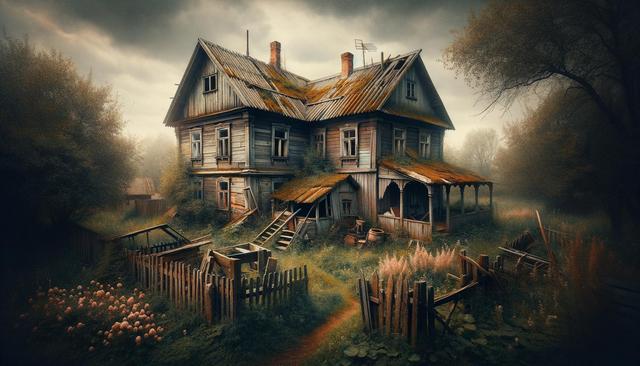Understanding the Appeal of Abandoned Houses
Abandoned houses often pique curiosity due to their mysterious nature and untold stories. For real estate enthusiasts, these properties can offer more than just visual intrigue—they can present real potential for those willing to invest time and effort. Many of these homes are situated in once-thriving neighborhoods, and with the right vision, they can be brought back to life. Whether nestled in rural settings or located in urban districts undergoing revitalization, abandoned houses may serve as unique real estate opportunities worth exploring.
There are several reasons why a property becomes abandoned, including financial hardship, inheritance complications, or natural disasters. These circumstances often leave behind structurally sound buildings that simply need attention. For buyers with a keen eye and a flexible budget, these properties can become cost-effective alternatives to newer homes. Moreover, the character and architectural features of older homes often add a charm that is difficult to replicate in modern construction.
Property Investment Potential
From a financial standpoint, abandoned houses can offer significant upside for those interested in property investment. With lower purchase prices compared to market-ready homes, these properties can be an entry point for first-time investors or a strategic move for seasoned professionals. The key is to conduct thorough research and due diligence before making a purchase.
Investors should consider the following when evaluating abandoned houses:
- Location and growth potential of the surrounding area
- Estimated repair and renovation costs
- Market trends and resale value in the region
- Legal ownership and property title issues
By addressing these factors, investors can better assess the risk and reward of each opportunity. In many cases, with the right approach, these homes can be transformed into profitable assets, either through resale or as rental properties.
Fixer-Upper Homes with Character
One of the most appealing aspects of abandoned houses is the opportunity to work on fixer-upper homes that carry a sense of history and individuality. Many such homes were built with now-rare materials and craftsmanship that modern buildings often lack. This gives buyers and restorers a unique canvas to work with, especially for those drawn to architectural restoration or design projects.
Taking on a fixer-upper can be both a challenge and a rewarding experience. Some of the benefits include:
- Personalizing the property to your taste
- Learning valuable skills related to home improvement
- Preserving historical architecture
However, it’s important to be realistic about the time and resources required. House restoration projects often come with unexpected hurdles, such as outdated wiring or hidden structural damage. Having a detailed plan and working with experienced contractors can significantly smooth the process.
Legal and Logistical Considerations
Before diving into the restoration of an abandoned property, it’s essential to understand the legal and logistical aspects involved. These homes may have unclear ownership, unpaid taxes, or municipal code violations that need to be resolved. Due diligence is crucial to avoid costly surprises later on.
Steps to consider include:
- Researching public property records
- Contacting local authorities for zoning and code information
- Seeking legal advice for purchasing through foreclosure or auction
- Understanding insurance and financing options for abandoned properties
Some municipalities may even offer incentives to buyers who restore such properties, as a means of improving community aesthetics and reducing blight. These programs can make the venture more financially viable while benefiting the local area.
Turning Real Estate Opportunities into Reality
Transforming an abandoned house into a livable or profitable space requires vision, patience, and commitment. While the process can be complex, the reward often lies in breathing new life into a forgotten structure. For those willing to take the journey, these properties can represent more than just bricks and mortar—they can be the foundation for long-term value and community improvement.
When approached strategically, abandoned houses can become:
- Renovated family homes full of character
- Rental properties generating consistent income
- Flipped homes with strong resale potential
By combining a passion for house restoration with careful planning and market awareness, motivated buyers can uncover exceptional value in places others may overlook.
Conclusion: Exploring the Potential of Forgotten Spaces
Abandoned houses offer more than just intriguing history—they can be gateways to meaningful property investment and creative expression. Whether you’re drawn to fixer-upper homes for their charm or see them as real estate opportunities with financial promise, these properties invite exploration. With the right mindset and practical approach, turning an abandoned house into a restored gem is not only possible but can be deeply rewarding. For those ready to take on the challenge, the world of abandoned homes holds untapped potential waiting to be discovered.




Leave a Reply